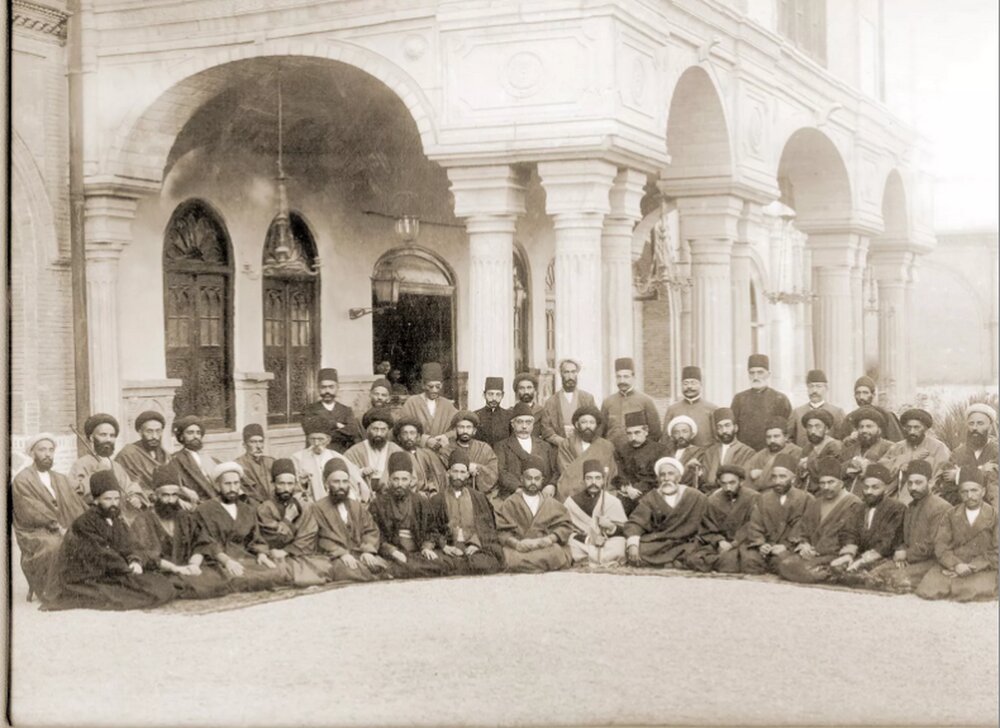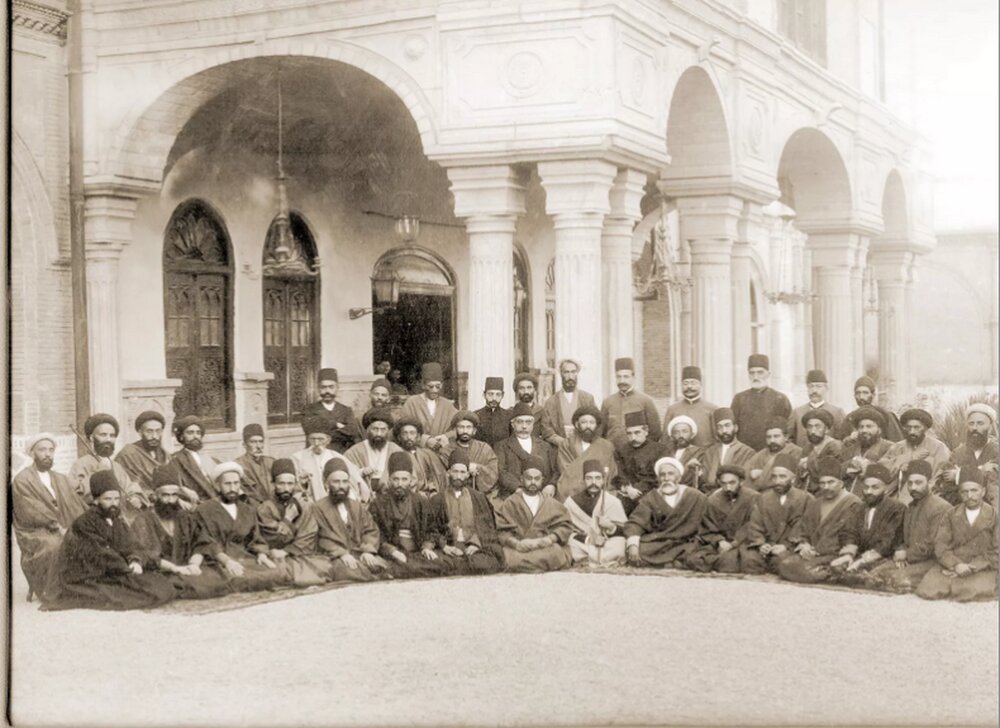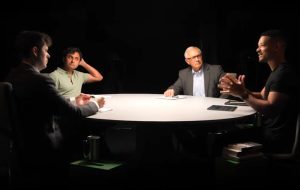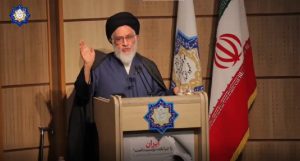
Group of Thought: What is the name on the constitution? These days, we are not only confronted with the distortion of the history of the Iranian National Oil Movement and the late Mossadegh, but also spreading to the constitutional distortion. Reza Mokhtari Esfahani His own article in the newspaper Iran It starts with various names such as the failure of the constitution, the unfinished constitution, the unfinished constitution, and so on. His article, a summary of two books on the subject of the Constitutional Revolution, examines two important aspects of this historical movement. First constitutional; The “everyone” movement is not a minority. In the first part, the author points to the historical distortion of the constitution and attribute it to a particular minority, such as the Babylonian and the Baha’is. The allegations, which began since Mohammad Ali Shah to destroy the constitution, were later followed by some scholars from two opposing groups (supporters and opponents of these rituals). The article, citing the book “The Constitution,” emphasizes that the constitution was the result of the unity and cooperation of a wide range of segments of society, from intellectuals and scholars to marketers and women, and attributing it to a particular group is a political reductionism. Second. In the second part, the author deals with the constitution with the Islamic Revolution. He explains that the leaders of the Islamic Revolution had a teaching view of the constitution because they believed that the movement led to Pahlavi tyranny due to factors such as the isolation of the jurisprudents. However, among the revolutionaries, people like Mehdi Bazargan and Ayatollah Taleghani had a different look. The constitutional merchant considered a “essential and bold act” and saw its failure as a result of the nation’s inadequacy, while Taleghani had learned from the isolation of the people after the Constitutional Revolution and emphasized the importance of public participation.
The author goes on to ask why the constitution was unfinished? Finally, it states that the process of “being deprived of the constitution” gradually took place and its main aspirations, such as “harassment and equality” throughout history, were either distorted or forgotten. The author concludes that The constitution is not a mere historical subject, but a living issue for Iran today, because its main aspirations have not yet been fully realized. This article reads:
****
Failed constitutional, unfavorable constitution, unfinished constitution, constitutional, impatient constitution, stolen constitution, etc. The names of this kind have always been given to one of the most important political, social and intellectual movements of Iranians; A movement that has sometimes made a political and ideological view of distortion. Such a look at the incomplete and perhaps distorted analysis of the constitution.
Bobby’s goals represent the constitutional revolution
The constitution was a movement that came from the consensus of the effective forces of society. In recent years, two contradictory views, but in one direction, have rejected the presence of different spectrum and classes of society in this movement and have attributed it to the eternal Babylonian or Baha’is in a reductionist perspective. Although some constitutional activists were accused of being eternal, in the dusty atmosphere of those years, it was more of a political accusation and was considered to be a competitor or constitutionalist for the field. Some defendants were only considered a family history in this category and were not recognized in the same way. This accusation has been raised in our time in an investigative but with a political perspective; The accusation that attributes the national legacy to a minority. Mohammad Reza Javadi and Ali Ragheb in the book “The Constitutional of the People” seek to respond to this ratio.
In the first part of the book, “The Historical Guide”, the events of the constitution, Babia and individuals are examined in the accusation of Bobbari. The first chapter, which is dedicated to the “discussion plan”, introduces one of the most important people who accused Bobbari on the constitution and the constitutionalists, Mohammad Ali Shah; The king who dismantled the constitution with the help of the Russian Kazakhs. In a letter to the jurisprudents and authorities living in Najaf, he wrote in justifying his action by the constitutionalists and their abuse of freedom. What Mohammad Ali Shah and the constitutional opponents founded were later followed by three groups of scholars with the constitutional assignment to Babylon or Baha’i: “a) a group of believers and authors of the faithful. B) pro -historians and writers. “C) Muslim historians and writers, or attributed to religious and government groups that are often inside Iran.” Interestingly, the first and third categories, despite the contradiction and conflict, are “heavily influenced by each other and often repeated each other’s words without referring or mentioning.”
The authors have tried to criticize their works by introducing these two categories. In the meantime, the work of two authors, Toraj Amini and Sayyed Moqdad Nabavi Razavi, is mostly the subject of their criticism; Two writers on two contrasting fronts. Sometimes the two authors, with two different expressions, convey a common purpose, and even in the absence of theory and scientific method in their work, they are very similar. What Bobby has forgotten, however, has forgotten the constitutional revolution is the presence of “different strata of intellectuals, Shiite scholars, merchants, women, Armenians, Caucasians, Azelis and the general public” in this intellectual and political movement. It is this characteristic that this revolution deserves the attribute of “all”.
The ratio of the Islamic Revolution with the constitution
Javadi and Ragheb have devoted their second book to the Constitutional Revolution and the relation of the Islamic Revolution with that revolution. The ratio of the Islamic Revolution and the constitution is one of the topics that was discussed during the reform period. Although the constitutional deviation was first mentioned during the presidential election period in year 2, after the election of Sayyid Mohammad Khatami, the constitutional continued and its relation to the revolution was the subject of discussion. The writers may have been working to answer this post -narrative. Therefore, they have based their research based on “sociology of history” and “history of morale”.
That is to say, the subject has been viewed over time and the mentality and conception of Iranian society, especially the leaders of the revolution from the constitution, and its relation to their aspirations in the years leading up to the revolution. The change of Iranian mentality to the constitution began in the years of the constitutional failure. This change of mentality can be seen in the rise or regret of the constitution with constitutional activists. The result of this rift and regret led to the reign of Reza Shah; The king whose companions and colleagues were elite and constitutional agents. During this period, the constitution was forgotten, and even in the sermon of Reza Shah’s coronation, written and read by Mohammad Ali Foroughi, there was no indication of the constitution. Foroughi, who wrote the treatise on fundamental rights, saw Reza Shah not in the constitutional revival but visualization of Nader Shah Afshar. Thus, from the beginning of the Pahlavi monarchy, part of the Iranian elite has broken from the constitution and, as Mossadegh said, the constitution became “delayed”.
The other part looked at it with a lesson and considered it to be repeated; The repetition that was mostly considered to be of its victory, not its realization. The leaders of the Islamic Republic, Ayatollah Khomeini and the supreme leader of the revolution, Ayatollah Ali Khamenei, have such a look at the constitution. The founder of the revolution, although some of his criticisms of the Pahlavi monarchy from the perspective of the constitution or praised the constitution for the leadership of the jurists, but after the victory of the revolution he had a teaching to the constitution, not a model. This view can be seen in cases such as the critique of the constitution in the isolation of the jurisprudents and the game party.
The constitution means that what existed in the political thought of Allameh Mohammad Hossein Naii is not so traceable in the view of the late leader of the revolution: “The constitution that Ayatollah Khomeini refer to is the evolved version of the constitutional constitution that has been merged with Ayatollah Nai’s constitution. On the one hand, Sheikh Fazlullah was in favor of the dual power of the Shah and Sheikh (meaning that the ruler is the king, but the jurisprudence, observer and legitimacy over the Shah), which was different from the Islamic state, as it was the Islamic Republic and later the Islamic Republic. “
The authors also refer to the concept of the constitution and the concept of the revolutionary who later joined the Revolutionary Council. It may be more sensitive to it than others (Motahari, Montazeri, Beheshti and Hashemi Rafsanjani). The merchant may be considered a constitutional child who was more sensitive to its events and results; However, in the post -revolutionary period, he, like many revolutionaries, was trying to “adapt to freedom and Islam”; However, according to the authors, “with the priority of Islam”, the merchant, but before, what should its analysis and view of the constitution in a text called “The Iranian Nation? He had explained a historical analysis for the national struggle.
In this work, which has been written from June to June 6, he has a brief and analytical look at Iranian history from Cyrus to Carter’s human rights policy. Businessman, who believed in positive constitutional results such as “freedom, law, elections, government and nation, attention to new sciences and ideas, establishing European model, changing methods in trade, industry and agriculture” and cases of development and modernity, especially “entering the nation into the affairs of the country”, “chaos and insecurity.”
This, however, did not make the merchant the constitutional necessity and usefulness of the constitution: “The constitutional experience, if its answer is negative, should not be considered that the constitutional revolution and the uprising of the nation for freedom were literal action … The problems and disadvantages we discussed were entirely due to a nation’s historical experience.” Therefore, the constitutional revolution was considered “essential and bold act” that “must finally be done and accept its bad and good consequences rather than experience. [کرده] And let’s change. ” In this regard, it is as if the merchant, not look at the past but to the revolutionary future that was on the verge of victory. Perhaps on the basis of such a foresight, he believed that in order to pass on tyranny to the constitution and the national government, “the nation in common and one personality” should stand against tyranny, and its condition was “unity of society and the love of individuals and collective action”.
Taleghani, despite publishing an important book “Punishment of Al -Ama’a and Tanziyyah al -Mullah” by Allameh Mohammad Hussein Naeini with a detailed introduction, led the constitutional fate; A libertarian movement that led to Pahlavi tyranny. This was also due to “the return of people to their homes and their isolating the revolution” they had made. Perhaps it was on the basis of this concern that he was particularly concerned about the approval of the principles of the councils in the constitution of the Islamic Republic; The consideration that can be “to expand the sovereignty of the people.”
The jurisprudents of the Revolutionary Council, however, unlike the two, not the positive concept and change in Iranian society, but they looked at the teaching. Motahari considered the constitution the beginning of the bipolarization of Iranian society. Another to agree with the constitution so much that it was in favor of Islam; The same look at people’s vote. The isolation of the jurisprudents in the constitutional period and the conformity of constitutional laws and concepts with Islam are other things that were relevant to other revolutionary jurisprudents such as Montazeri, Beheshti and Hashemi Rafsanjani.
The most important discussion of the book is about the constitutional footprint in the constitution of the Islamic Republic. This ratio has a long narrative of the draft constitution, how it is reviewed, the Majlis, and the final review of the constitution (experts), some of the negotiations on the concepts of confidence and equality in this Majlis, and the Constitutional Review Council. According to the authors, the process of depletion of the constitution was a gradual process that took place. The book “Elimination of the Constitution” may be a narrative of the movement of a movement that was formed by the cause of righteousness and equality, but faced with failure. This failure was later extended by the children of the constitution until their aspirations and concepts were either distorted or went to. If we consider development to be the main goal of the constitution, the children of the constitution in the course of events either followed it in the Pahlavi monarchy or in the revolution against it and the end of the constitution. With such a definition, the constitution is not a historical issue but a matter for today and tomorrow.
1
منبع: www.khabaronline.ir




